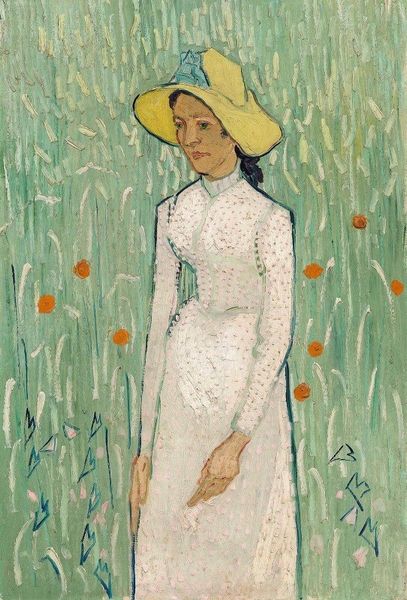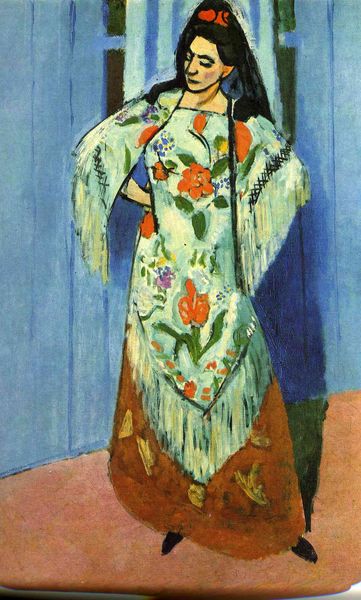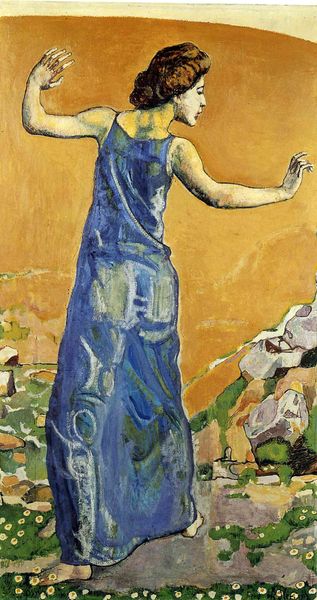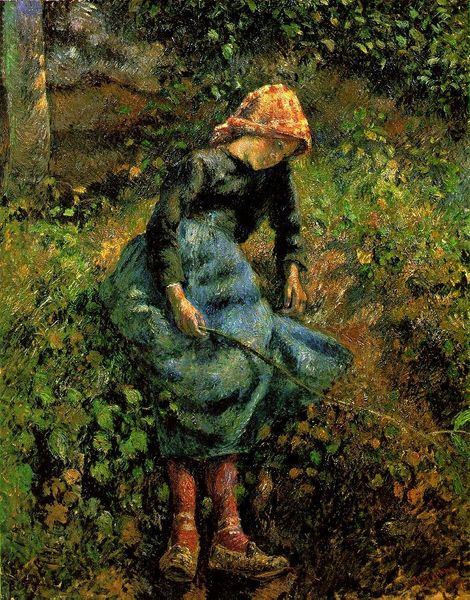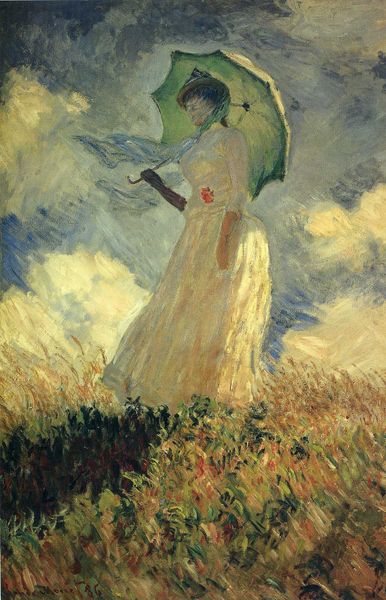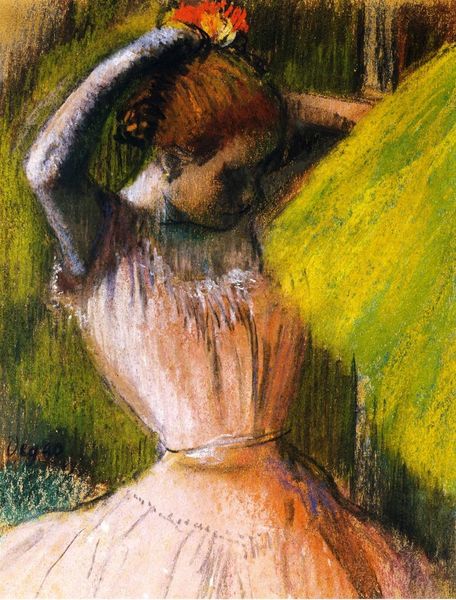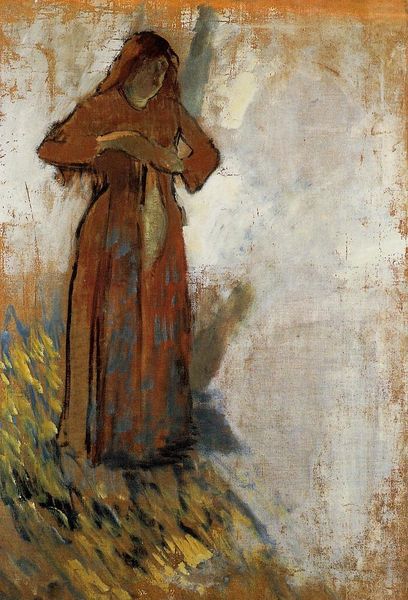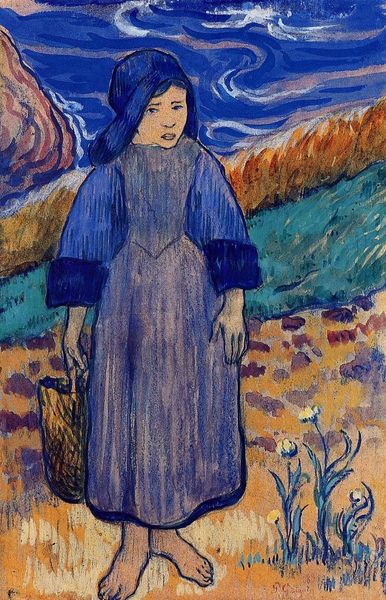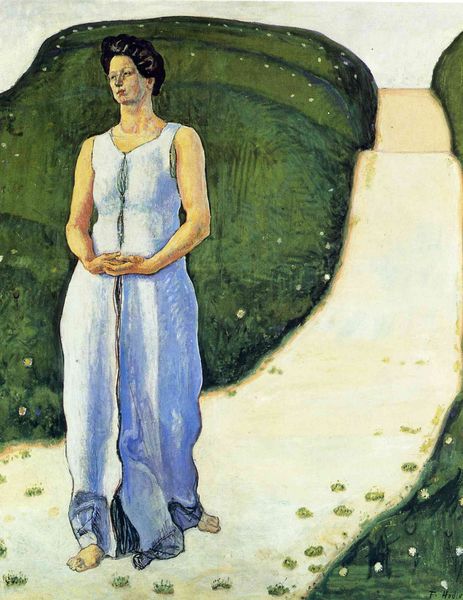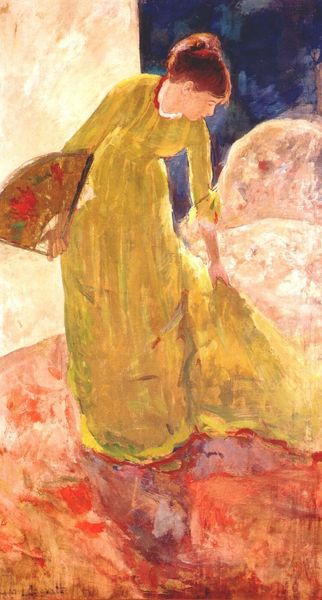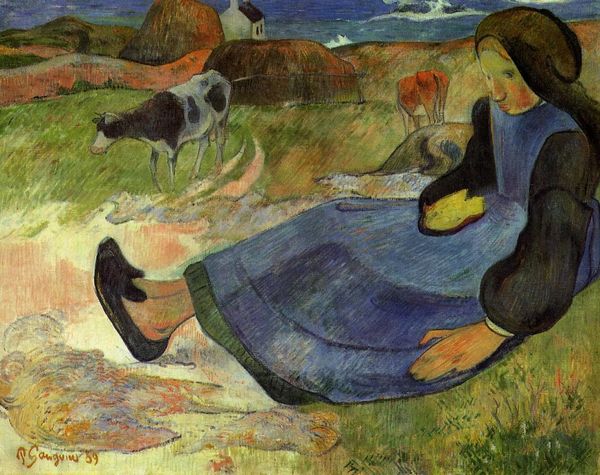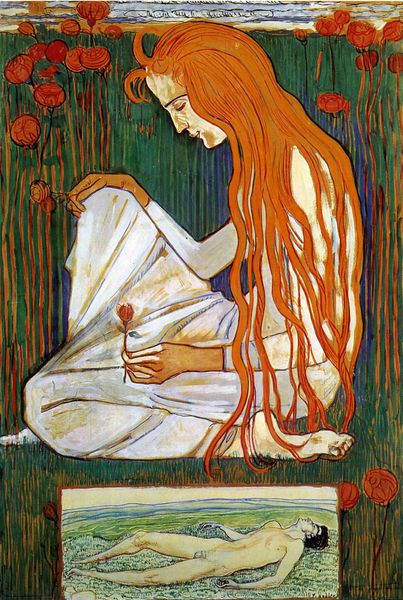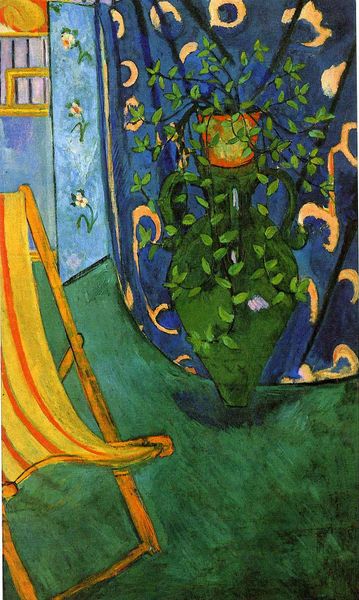
painting, oil-paint
#
portrait
#
painting
#
oil-paint
#
landscape
#
figuration
#
oil painting
#
naive art
#
symbolism
#
watercolour illustration
#
modernism
Dimensions: 70 x 115 cm
Copyright: Public domain
Curator: This is Ferdinand Hodler’s “Emotion,” an oil on canvas painted around 1900. Editor: My initial reaction is a sense of serene melancholy. The cool blues and greens create a calm, almost ethereal atmosphere. Curator: Hodler was deeply interested in depicting universal human experiences through symbolism. “Emotion”, now housed at the Belvedere in Vienna, Austria, presents a figure in harmony—or perhaps struggle—with her environment, a prevalent theme during the Modernist movement as artists grappled with shifting social structures. Editor: I am immediately struck by the figure's pose and dress. The simplified forms and flat planes are reminiscent of naive art, yet they convey a very sophisticated psychological landscape. See the way the folds of her dress echo the contours of the surrounding landscape. Curator: Hodler’s biography is as important as the colors chosen: his intense experiences, including the loss of family to tuberculosis, heavily influenced his approach to art, as evidenced by the somber tone suffused within his landscapes and portraits. Hodler also actively engaged with various artistic circles, which informed his place within larger dialogues about societal reforms during that time. Editor: Look at the expressive hand gesture. It's not naturalistic, yet it communicates a powerful sense of vulnerability. Note too how the woman’s dress falls freely. This attention to line directs your focus immediately to the foreground figure. Curator: He explored these feelings through various versions, demonstrating how emotion manifested differently during those historical periods of societal reconstruction. Editor: The limited palette forces us to really consider form and line. How shapes mirror one another, the repetition creating a sense of unity. Curator: Absolutely. Hodler utilized art as both expression and social commentary. The positioning of the figure amid blossoming flowers creates a dialog of rebirth. "Emotion" exemplifies not just the artist's internal struggles but mirrors Switzerland’s push towards an embrace of social democracy and national identity. Editor: Examining his piece this closely brings a deeper reading of symbolism, and I admire it. It is truly a piece about connection—between form, figure, and feeling.
Comments
No comments
Be the first to comment and join the conversation on the ultimate creative platform.
